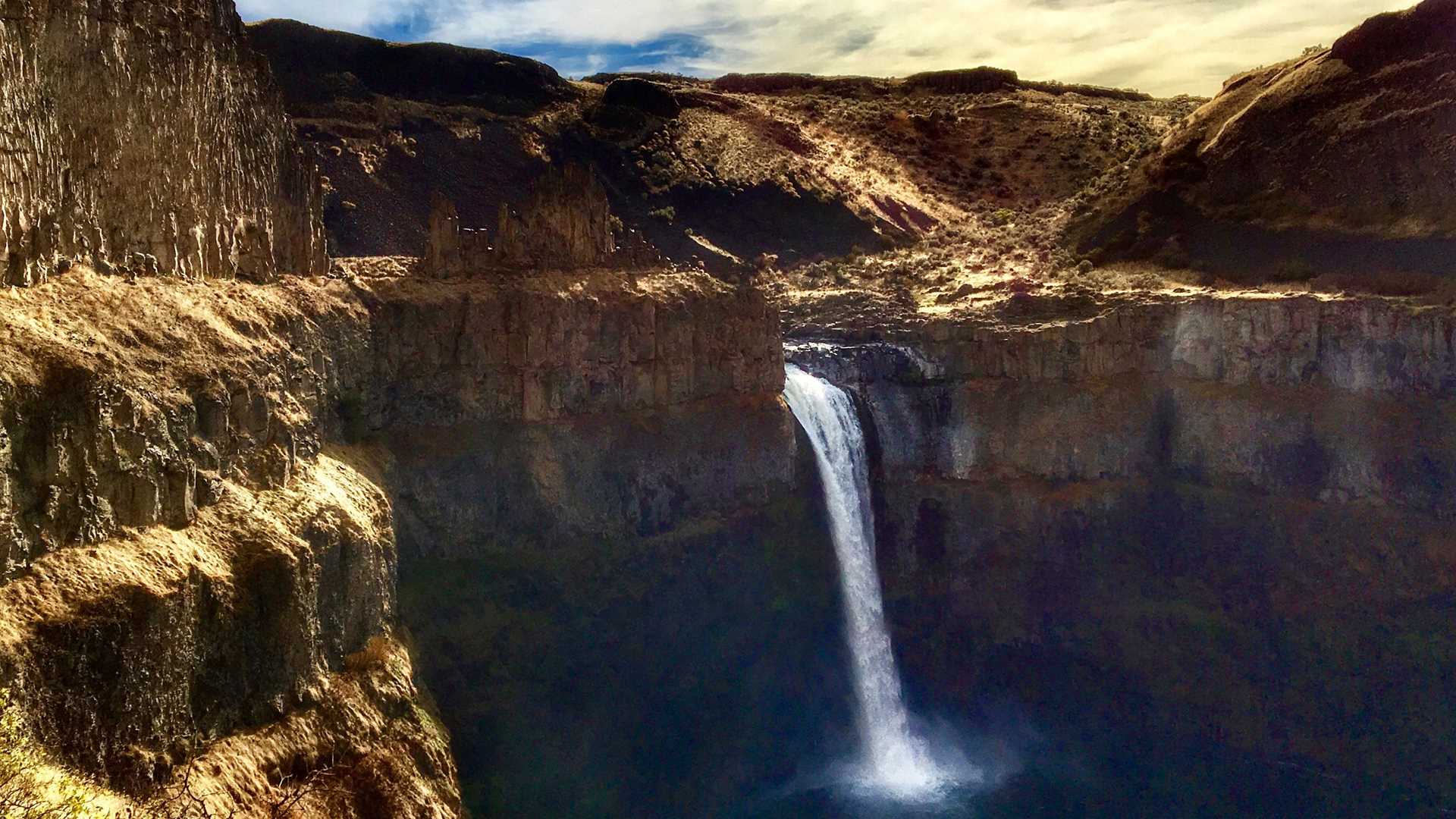At 6:00 a.m. the National Geographic Sea Lion dropped anchor on the Palouse River. Dawn was just breaking and soon early light glowed on the buff colored grasses of autumn that trim out the dark brown cliffs of basalt that surround us. A waning gibbous moon stood high in a clear sky and bright Venus hung low in the east. A flock of Canada geese flew by the base of a cliff, heard, but unseen against the dark rock.
We began our exploration of this scenic area early. Some took an expedition landing craft shuttle to shore to meet a bus for the drive to Palouse Falls, crown jewel of the Palouse area. Palouse falls drops nearly 200 feet into its green plunge pool from where it flows away into the rugged and beautiful Palouse Canyon. Others set off on expedition landing craft tours and cruised up the Palouse River and into that canyon, carved by Ice Age floods. We stopped for close looks at columnar basalt while enjoying the bracing fragrance of sagebrush—the smell of the West. Ring-necked Pheasants flew into tall grass. Up the river a red-tailed hawk soared over the high cliffs while two mule deer ran through the brown grass and over a hilltop. Sumac bushes burned crimson on the talus slope above us.
Back on the Snake River in the afternoon, we cruised along enjoying the mild weather, sunshine, and beautiful scenery. We had frequent sightings of western grebes, double-crested cormorants, and ring-billed gulls. A special sighting was a pair of common loons swimming near the ship. We had an adventure at Lower Monumental Dam when many of us went through the lock in the expedition landing crafts—quite a treat and an interesting perspective on locks. This was followed by a presentation on the Ice Age floods that demonstrated the power of vast amounts of rapidly flowing water that sculpted this landscape.
In the evening we watched Paradise Road, the story of Sam Hill and the Historic Columbia River Highway, a highway we are to drive on tomorrow. This brought us to the end of another memorable day on the rivers.







